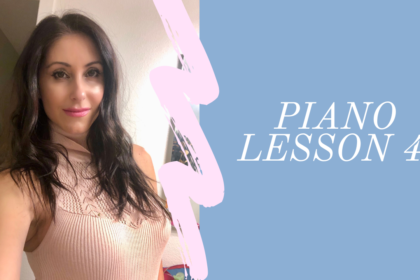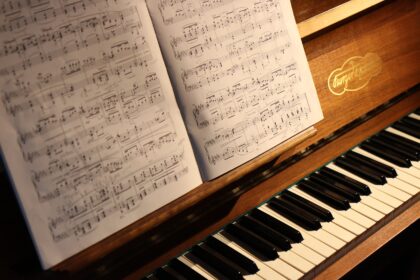What you’ll learn in this lesson
- How to sit correctly in front of the piano
- How to place your hands on the piano
- Explaining the keyboard: white & black keys
- Where the notes are located on the piano
- Half steps & whole steps
- How to use your fingers on the piano
Welcome to your first piano lesson. We’re so glad you are here and want to learn music theory and how to play the piano.
The piano consists of 88 black and white keys. As you play on the keys a hummer inside the piano touches a string that creates the sound that comes out.
You may be asking yourself:
What is Music Theory?
- Music theory is the discipline that teaches compositional methods. For example, notes, rhythm, tempo, dynamic, tone, pitch, time signatures, and more. It’s also a common language all musicians understand and use when they create music. We’ll go in more depth in what music theory is as the lessons progress. But remember, everything you’ll be learning in here is considered music theory.
Why should I learn Music Theory?
- To put it in simple words, if you don’t know the alphabet you can’t communicate verbally and in written form. The same applies to playing music, if you don’t know what the notes mean, you won’t be able to read music. It’s as simple as that!
Let’s begin this exciting journey of learning music together!
The Twins
How To Sit Correctly In Front Of The Piano
- Get a comfortable bench that is not too high and not too low.
- Sit tall
- Keep your back straight, don’t slouch or sit too close
- Sit towards the edge of the bench, but not so much that you’ll fall
- Lean a bit forward and relax your arms
- Elbow, wrists, and hands a bit higher than the keyboard at 90 degrees
- Knees slightly under the piano
- Feet flat on the floor
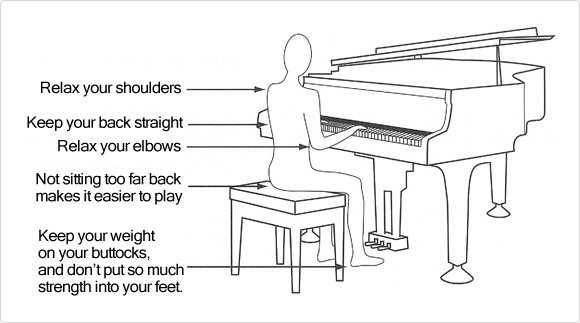
How To Place Your Hands On The Piano
When you place your hands on the keys, curve your hands as you are holding an apple.
Explaining The Keyboard: White & Black Keys
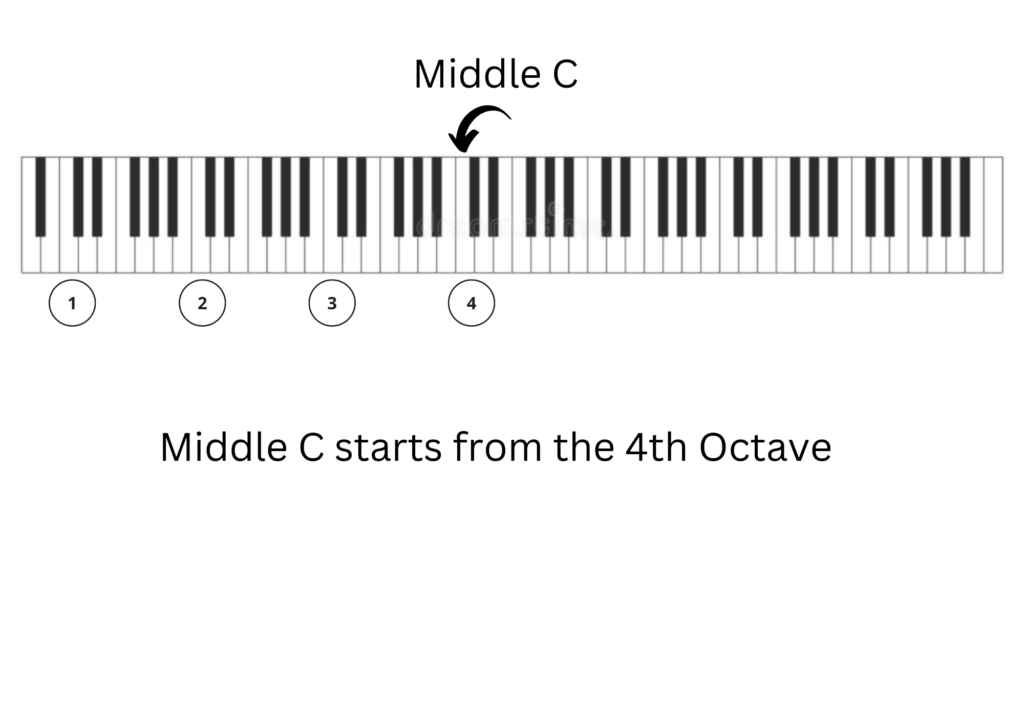
The piano has 88 keys, 52 white and 36 black. The piano also has 7 octaves. If you take your left hand move it all the way to the last 3 keys, you’ll learn that the bottom 3 notes are (B, B flat, and A). If you move your right hand all the way down, the very last key is (C). Each octave has 7 white and 5 black keys.
It’s important to know where middle C is located on the piano, because you’ll always know where to start playing your piece and which notes to play.
Where The Notes Are Located On The Piano
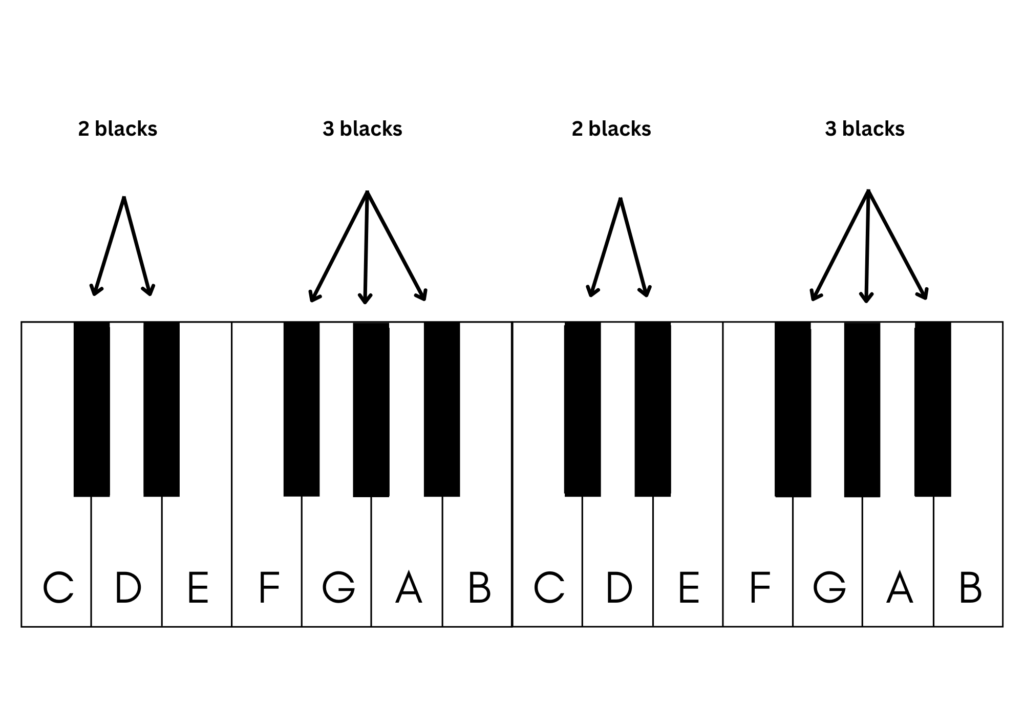
All 7 octaves consist of the same notes in the order: C, D, E, F, G, A, B, and C again. Between C-E there’re 2 black keys, between F-B there’re 3 black keys. Remember this order, because it’s consistent throughout all 88 keys, and 7 octaves.
As you move down to the left the sound becomes LOWER & DEEPER. As you move to the right, the sound becomes HIGHER.
Half Steps & Whole Steps
A half step is any two keys together with no keys in between. Half steps, or also called semitones are the smallest interval between notes. For example, C to C# sharp this is a half step, F to F# sharp, this is another half step.
The distance between any two pitches that are TWO half steps apart is called a WHOLE STEP. For example, C to D makes a whole step, there’s one black key which is the half step between C and D; F to G makes another whole step, there’s another black key between F and G.
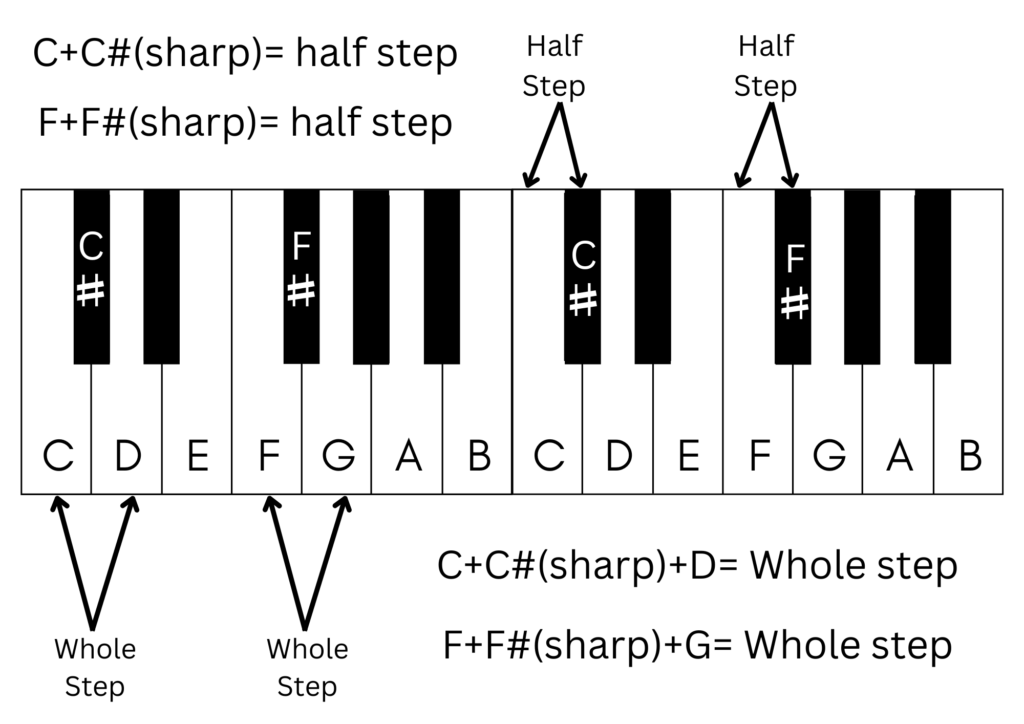
This may sound a bit confusing, but don’t worry, as you progress in the upcoming lessons, you’ll see how easy it is.
Finger Numbers
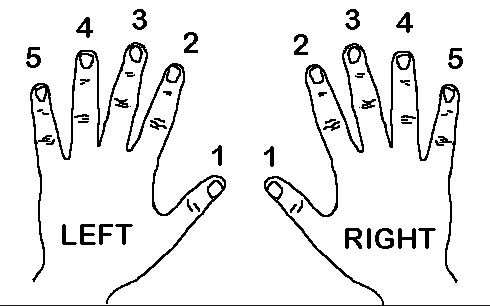
The thumb is your first finger on each hand. As a beginner, try playing on the keys using each finger one at a time and say the finger number out loud. This will help you remember the finger numbers. As you play more, you’ll notice how your fingers are starting to move on their own, without you thinking about it.
Keep in mind that not all fingers have the same strength. The strongest, fastest, and most agile fingers are your 2nd and 3rd fingers on each hand.
The 4th and 5th fingers are the least independent and weakest. Especially the 5th is considered the weakest, because of the tendons which bind the 4th and 5th fingers.



